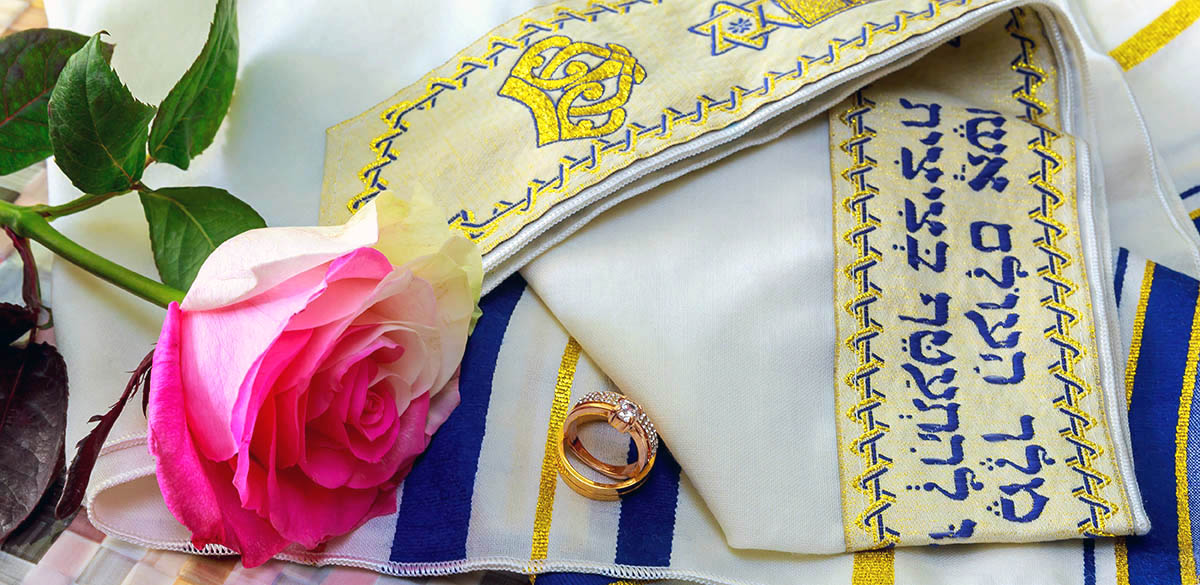
...............................................................................................
The Second Coming And Jewish Wedding
Customs
“For the wedding of the Lamb has come,
and His bride has made herself ready. … Blessed are those who are invited
to the wedding supper of the Lamb!” (Revelation 19:7, 9)
While the exchange of
covenant vows between a man and woman who love each other is a blessing in any
culture, there are aspects of the Jewish wedding celebration that are rich in
spiritual truths.
This ancient ritual prophetically points to the coming of the
Messiah and the great celebration of the marriage supper of the Lamb.
It also teaches us unique
lessons about God’s covenant love for His people.
One would be hard pressed to find an occasion more joyous than
that of a Jewish wedding. In Hebrew, it’s called a simcha (a
joyous occasion).
“Yet in the towns of Judah
and the streets of Jerusalem that are deserted, inhabited by neither people nor
animals, there will be heard once more the sounds of joy and gladness, the
voices of bride and bridegroom.” (Jeremiah 33:10–11)
There are three distinct
parts to the ancient Jewish wedding:
·
shiddukhin (mutual commitment),
·
erusin (engagement), and
·
nissuin (marriage).
Shiddukhin: A
Time of Mutual Commitment
“The Lord God said, ‘It is
not good for the man to be alone. I will make a helper suitable for him.’” (Genesis 2:18)
Shiddukhin refers to the preliminary arrangements prior to the
legal betrothal.
In ancient times, the father
of the groom often selected a bride (kallah) for his son, as did Abraham for
his son Isaac (Genesis 24:1-4).
In Ultra-Orthodox Judaism today, many marriages are still
arranged by a marriage broker or matchmaker called
a shadkhan.
It’s considered an exalted
and holy vocation to find and arrange a good marital match, called a shiddukh,
between a man and woman.
In ancient times, marriage was looked upon as more of an
alliance for reasons of survival or practicality, and the concept of romantic
love remained a secondary issue, if considered at all. Romantic love grew
over time.
Of course, the consent of the
bride-to-be is an important consideration.
Rebecca (Rivkah), for
example, was asked if she agreed to go back with Abraham’s servant to marry
Abraham’s son, Isaac. She went willingly (Genesis 24:57–59).
Likewise, we cannot be forced into a relationship with the Son,
Yeshua (Jesus).
In the same way that Rebecca was asked if she would go with
Abraham’s servant, the Holy Spirit (Ruach HaKodesh) asks us if we are willing
to follow Him to be joined in a covenant of love with Yeshua.
Traditionally, in preparation for the betrothal ceremony, the bride (kallah) and groom (chatan) are
separately immersed in
water in a ritual called the mikvah, which is symbolic of spiritual
cleansing.
In Matthew 3:13–17, we read that Yeshua has already been
immersed (baptized) by Yochanan (John) in the waters of mikvah at
the Jordan
River.
As the Bride-to-be, we are also asked to be immersed.
“Whoever believes and is
baptized [ritually immersed] will be saved, but whoever does not believe will
be condemned.” (Mark 16:16)
Erusin: The Betrothal
“He who finds a wife finds
what is good and receives favor from the Lord.” (Proverbs 18:22)
After the immersion, the couple entered the huppah (marriage
canopy) — symbolic of a new household being planned, to establish a
binding contract.
Here, the groom would give the bride money or a valuable object
such as a ring, and a cup of wine was customarily shared to seal their covenant
vows.
In this public ceremony under the huppah, the couple entered
into the betrothal period, which typically lasted for about a year. Although
they were considered married, they did not live together or engage in sexual
relations.
To annul this contract, the
couple would need a religious
divorce (get),
which had to be initiated by the husband.
Matthew 1:18–25 provides an excellent example of this.
During the erusin of Yosef (Joseph) and Miriam’s (Mary), Yosef
discovered that Miriam was pregnant, and he considered divorcing her, although
he had not yet brought her home as his wife.
“… he had in mind to divorce her quietly. But after he
had considered this, an angel of the Lord appeared to him in a dream and said,
‘Joseph son of David, do not be afraid to take Mary home as your wife, because
what is conceived in her is from the Holy Spirit.’” (Matthew 1:19–20)
During the erusin period, the
groom was to prepare a place for his bride, while the bride focused on her
personal preparations: wedding garments, lamps, etc.
Although the bride knew to expect her groom after about a year,
she did not know the exact day or hour. He could come earlier. It
was the father of the groom who gave final approval for him to return to
collect his bride.
For that reason, the bride kept her oil lamps ready at all
times, just in case the groom came in the night, sounding the shofar (ram’s
horn) to lead the bridal procession to the home he had prepared
for her.
In the Parable of the Ten Virgins (Matthew 25:1–13),
Yeshua (Jesus) likened the Kingdom of Heaven to this special period of erusin,
when the groom comes for his bride:
“At midnight the cry rang
out: ‘Here’s the bridegroom! Come out to meet him!’ Then all the
virgins woke up and trimmed their lamps.” (Matthew 25:6–7)
So too today, in the season
of Yeshua’s end-time return, we should be careful to remain alert and prepared
for His coming, since Yeshua was speaking to His disciples prophetically about
the condition of the Church in the last days.
“Not everyone who says to Me,
‘Lord, Lord,’ will enter the kingdom of heaven, but only he who does the will
of my Father who is in heaven.” (Matthew 7: 21)
Nissuin:
The Marriage
“And if I go and prepare a
place for you, I will come back and take you to be with me that you also may be
where I am.” (John 14:3)
The final step in the Jewish wedding tradition is called nissuin
(to take), a word that comes from naso, which means to lift up.
At this time, the groom, with much noise, fanfare and romance,
carried the bride home. Once again, the bride and groom would enter the
huppah, recite a blessing over the wine (a symbol of joy), and finalize their
vows.
Now finally, they would
consummate their marriage and live together as husband and wife, fully
partaking of all the duties and privileges of the covenant of marriage.
Likewise, the Messiah, as the Bridegroom, has gone to prepare a
place for us.
The day of the return of the Messiah for His Bride is
soon approaching.
Although, we know
approximately the time of His return from the signs of the times, “the
day of the Lord will come like a thief in the night.” (2 Peter 3:10)
The Bride (Believers in Yeshua) should be living consecrated
lives, keeping themselves pure and holy in preparation for the Nissuin and the
Wedding Feast of the Lamb, when the Groom comes with the blast of the shofar (1 Thessalonians 4:
16) to bring His Bride home.
Traditional
Jewish Marriages Today
“Let the bridegroom leave his
room and the bride her chamber [huppah].” (Joel 2:16)
Today, in traditional Judaism, the erusin and the nissuin are
combined into one.
The bride and groom sign the
marriage contract (ketubah) in the presence of the rabbi and two witnesses
before the ceremony.
Unlike a Christian wedding, where it’s generally taboo for the
groom to see the bride before the ceremony, in a Jewish wedding, the groom must
see his bride before the ceremony.
Why? Remember the story
of Laban, who tricked Jacob into marrying his eldest daughter, Leah, even
though he loved Rachel?
Since Jacob didn’t ensure the identity of his bride, he ended up
marrying the woman he thought would be his sister-in-law, Leah. (Genesis 29:21–30)
Although in ancient times, the wedding feast (seudah) after the
nissuin might have included seven full days of food, music, dancing and
celebrations (Judges 14:10–12),
today the Jewish ceremony is usually followed by a wedding supper and reception
with food, wine, music and dance!
However, Orthodox Jews celebrate
after the wedding for seven nights, with friends and family, hosting festive
meals in honor of the bride and groom.
The Marriage Supper of the Lamb
“Then I saw a new heaven and
a new earth, for the first heaven and the first earth had passed away, and
there was no longer any sea. I saw the Holy City, the new Jerusalem,
coming down out of heaven from God, prepared as a bride beautifully dressed for
her husband.” (Revelation 21: 1–2)
When Messiah returns for us, and everything in the world today
indicates that this will be very soon, we will celebrate the marriage supper of
the Lamb with Him and our joy (simcha) will be beyond measure.
But there will be those who won’t share in our simcha or
celebrate with us because they do not know Yeshua!
Now is the time to reach out
to them, while we are still in the erusin period, before the Bridegroom comes.
“Behold, I am coming
soon! My reward is with me, and I will give to everyone according to what
he has done. … The Spirit and the bride say, ‘Come!’ And let him who
hears say, Come!’ Whoever is thirsty, let him come.” (Revelation 22:12, 17)
 |
Since June is the month of
weddings, there is no better time to reflect on the much anticipated gathering
of the bride (kallah) and the wedding of the Lamb!
|
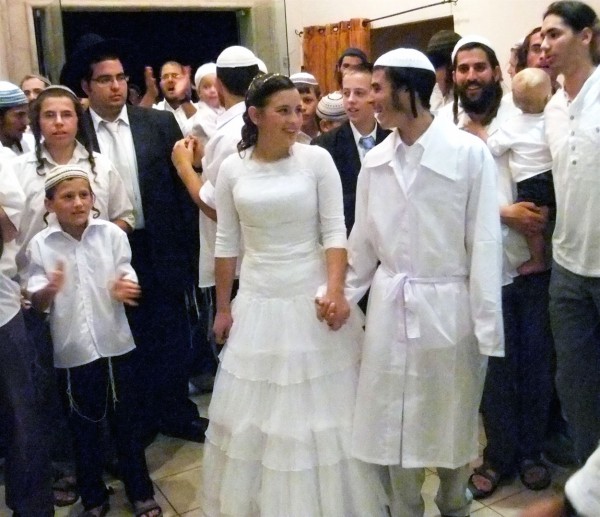 |
An Orthodox Jewish wedding in Jerusalem: Traditionally, on
the day of his wedding, the chatan (groom) wears first wears the kittel (white
linen garment), which signifies purity, holiness and new beginnings.
Thereafter, he wears it on special occasions such as Rosh Hashanah (New
Year’s), Yom Kippur (Day of Atonement), and Pesach (Passover).
|
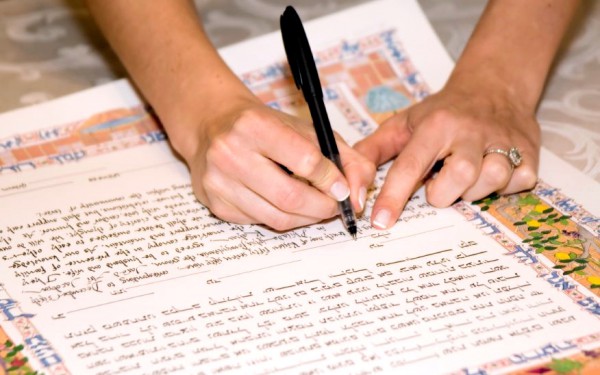 |
Signing the ketubah (marriage contract): In ancient times,
the ketubah protected the rights of the wife by specifying the groom’s
responsibilities in caring for her, and the amount of support that would be due
her in the event of a divorce.
|
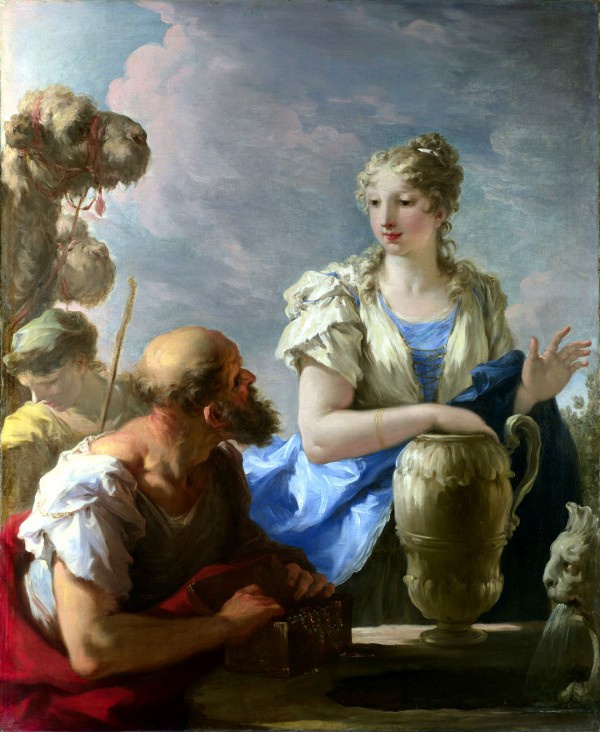 |
Rebecca at the Well,
|
 |
A groom rejoices by dancing with his friends after immersing
himself in the mikvah. The water for this mikvah bath is outside and fed
by a spring, from which the natural water runs down a hill into the mikvah,
just outside of Jerusalem.
|
 |
An outdoor Jewish wedding under a huppah in Vienna
|
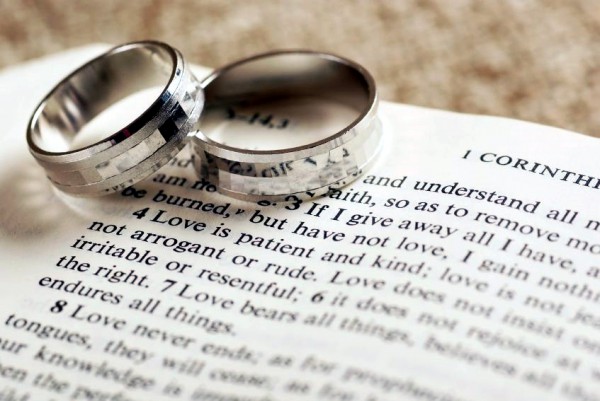 |
Love is patient and kind
|
 |
The Parable of the Wise and Foolish Virgins,
|
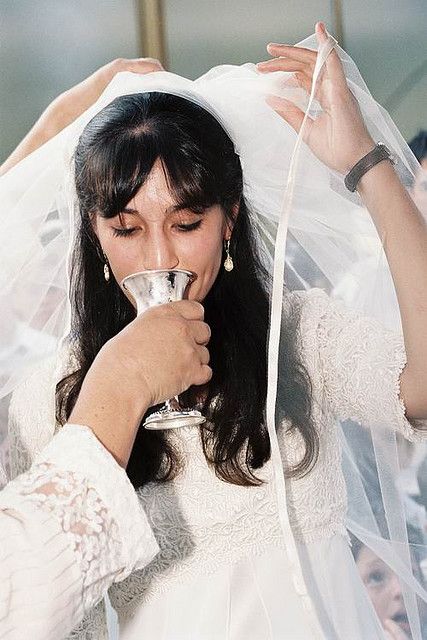 |
In Jewish weddings today, there are two cups of wine during
the wedding ceremony. After the rabbi recites the betrothal blessings
accompanying the first, the couple drinks from the cup. Since wine is
associated with Kiddish, the prayer of sanctification recited on Shabbat, and
since marriage is the sanctification of the bride and groom to each other,
marriage is also called kiddushin.
|
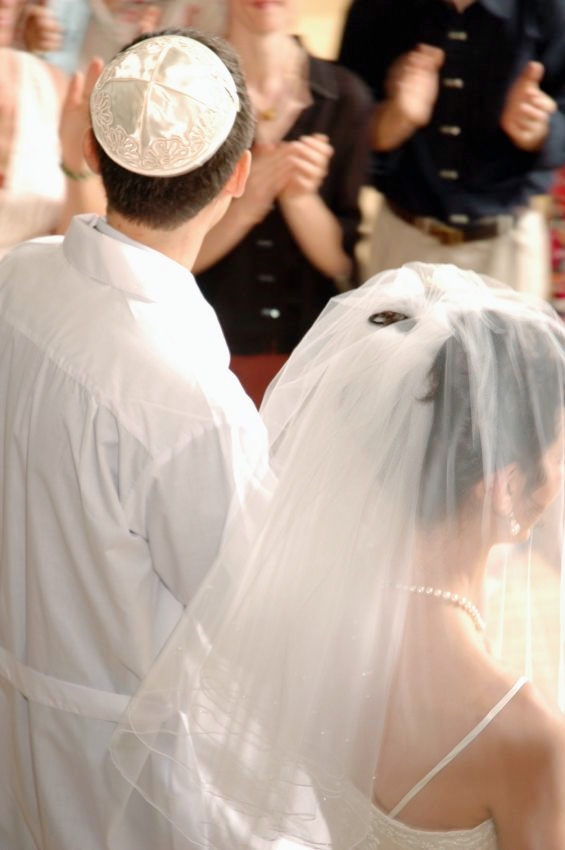 |
It is traditional in some communities for the bride to circle
the groom seven times and then stand to the groom’s right side under the
huppah. Since seven is the number of completion and perfection, this act
symbolizes the “wholeness and completeness they cannot attain separately”
|
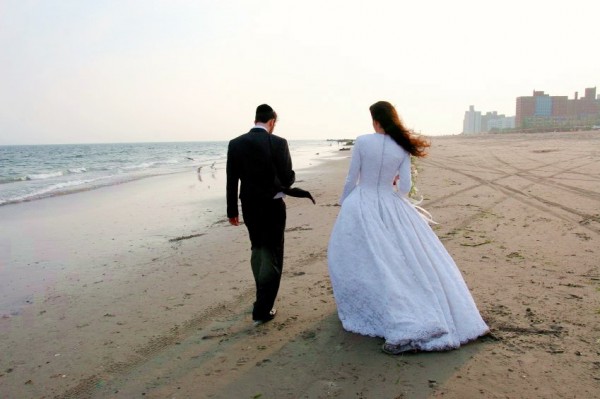 |
A Jewish bride and groom take a walk beside the ocean
together for the first time as man and wife.
|
 |
Jacob Meets Rachel at the Well
|
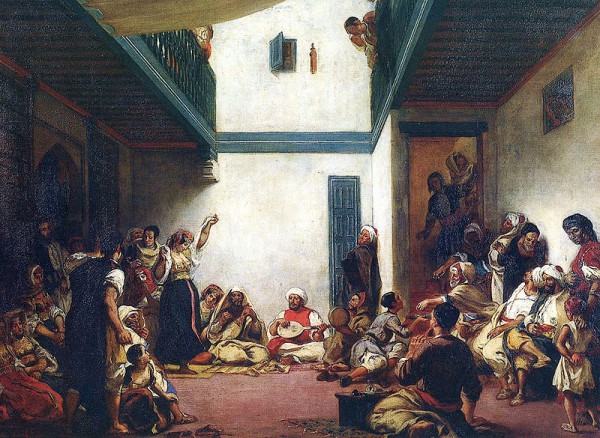 |
Jewish Wedding in Morocco
|
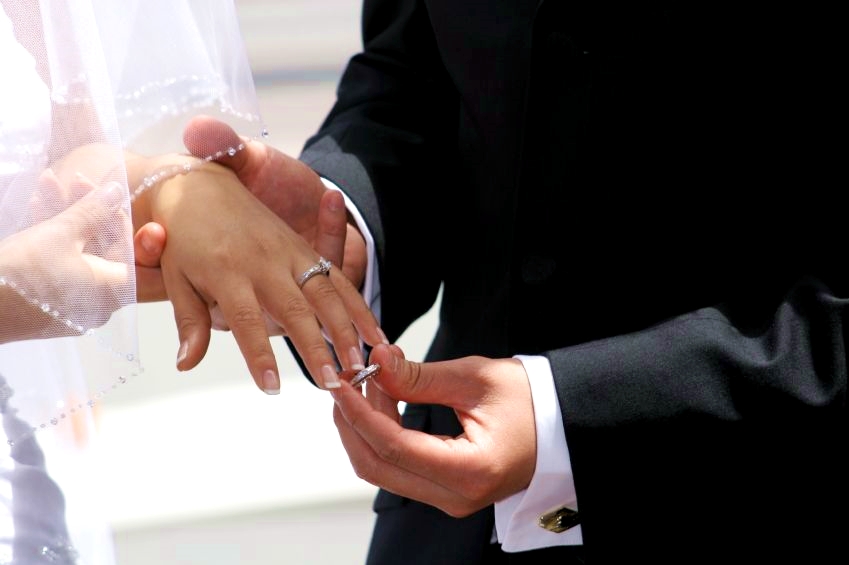 |
Jewish wedding bands are often inscribed with Ani L’Dodi
V’Dodi Li (I am my beloved’s and my beloved is mine). The words of this
verse are also considered an acrostic for “Elul,” reflecting our very real
potential to enjoy a vibrant, intimate relationship with Adonai if we will only
turn from sin in repentance and seek Him.
|
No comments:
Post a Comment